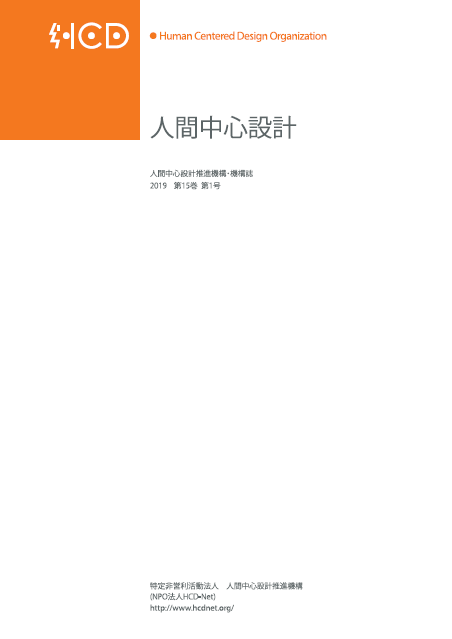Volume 2, Issue 1
Displaying 1-28 of 28 articles from this issue
- |<
- <
- 1
- >
- >|
Front Matter
-
Article type: Cover
2006Volume 2Issue 1 Pages 0
Published: June 02, 2006
Released on J-STAGE: November 24, 2021
Download PDF (85K) -
Article type: Table of Contents
2006Volume 2Issue 1 Pages 0_1-0_2
Published: June 02, 2006
Released on J-STAGE: November 24, 2021
Download PDF (733K)
Messages from the board directors and division managers
-
Article type: Contribution
2006Volume 2Issue 1 Pages 1
Published: June 02, 2006
Released on J-STAGE: November 24, 2021
Download PDF (2286K) -
Article type: Contribution
2006Volume 2Issue 1 Pages 2
Published: June 02, 2006
Released on J-STAGE: November 24, 2021
Download PDF (4949K) -
Article type: Contribution
2006Volume 2Issue 1 Pages 3
Published: June 02, 2006
Released on J-STAGE: November 24, 2021
Download PDF (2234K) -
Article type: Contribution
2006Volume 2Issue 1 Pages 4
Published: June 02, 2006
Released on J-STAGE: November 24, 2021
Download PDF (2494K) -
Article type: Contribution
2006Volume 2Issue 1 Pages 5
Published: June 02, 2006
Released on J-STAGE: November 24, 2021
Download PDF (2381K) -
Article type: Contribution
2006Volume 2Issue 1 Pages 6
Published: June 02, 2006
Released on J-STAGE: November 24, 2021
Download PDF (2755K) -
Article type: Contribution
2006Volume 2Issue 1 Pages 7
Published: June 02, 2006
Released on J-STAGE: November 24, 2021
Download PDF (535K) -
Article type: Contribution
2006Volume 2Issue 1 Pages 8
Published: June 02, 2006
Released on J-STAGE: November 24, 2021
Download PDF (480K)
Activity Report for FY 2005
-
Article type: Contribution
2006Volume 2Issue 1 Pages 9-11
Published: June 02, 2006
Released on J-STAGE: November 24, 2021
Download PDF (1989K) -
Article type: Contribution
2006Volume 2Issue 1 Pages 12-15
Published: June 02, 2006
Released on J-STAGE: November 24, 2021
Download PDF (4015K) -
Article type: Contribution
2006Volume 2Issue 1 Pages 16-19
Published: June 02, 2006
Released on J-STAGE: November 24, 2021
Download PDF (6325K)
Contributed Article
-
Article type: Contribution
2006Volume 2Issue 1 Pages 20-21
Published: June 02, 2006
Released on J-STAGE: November 24, 2021
Download PDF (723K)
Paper
-
Article type: Contribution
2006Volume 2Issue 1 Pages 22-29
Published: June 02, 2006
Released on J-STAGE: November 24, 2021
Download PDF (4018K) -
Article type: Contribution
2006Volume 2Issue 1 Pages 30-33
Published: June 02, 2006
Released on J-STAGE: November 24, 2021
Download PDF (5696K) -
Article type: Contribution
2006Volume 2Issue 1 Pages 34-37
Published: June 02, 2006
Released on J-STAGE: November 24, 2021
Download PDF (6592K) -
Article type: Contribution
2006Volume 2Issue 1 Pages 52-55
Published: June 02, 2006
Released on J-STAGE: November 24, 2021
Download PDF (5791K) -
Article type: Contribution
2006Volume 2Issue 1 Pages 56-57
Published: June 02, 2006
Released on J-STAGE: November 24, 2021
Download PDF (4397K) -
Article type: Contribution
2006Volume 2Issue 1 Pages 58-60
Published: June 02, 2006
Released on J-STAGE: November 24, 2021
Download PDF (3910K) -
Article type: Contribution
2006Volume 2Issue 1 Pages 61-66
Published: June 02, 2006
Released on J-STAGE: November 24, 2021
Download PDF (4460K) -
Article type: Contribution
2006Volume 2Issue 1 Pages 67-70
Published: June 02, 2006
Released on J-STAGE: November 24, 2021
Download PDF (3429K) -
Article type: Contribution
2006Volume 2Issue 1 Pages 71-72
Published: June 02, 2006
Released on J-STAGE: November 24, 2021
Download PDF (4401K) -
Article type: Contribution
2006Volume 2Issue 1 Pages 77-80
Published: June 02, 2006
Released on J-STAGE: November 24, 2021
Download PDF (2060K) -
Article type: Contribution
2006Volume 2Issue 1 Pages 81-84
Published: June 02, 2006
Released on J-STAGE: November 24, 2021
Download PDF (8140K) -
Article type: Contribution
2006Volume 2Issue 1 Pages 85-88
Published: June 02, 2006
Released on J-STAGE: November 24, 2021
Download PDF (7146K) -
Article type: Contribution
2006Volume 2Issue 1 Pages 93-96
Published: June 02, 2006
Released on J-STAGE: November 24, 2021
Download PDF (6328K) -
Article type: Announcement
2006Volume 2Issue 1 Pages 97-99
Published: June 02, 2006
Released on J-STAGE: November 24, 2021
Download PDF (5307K)
- |<
- <
- 1
- >
- >|
